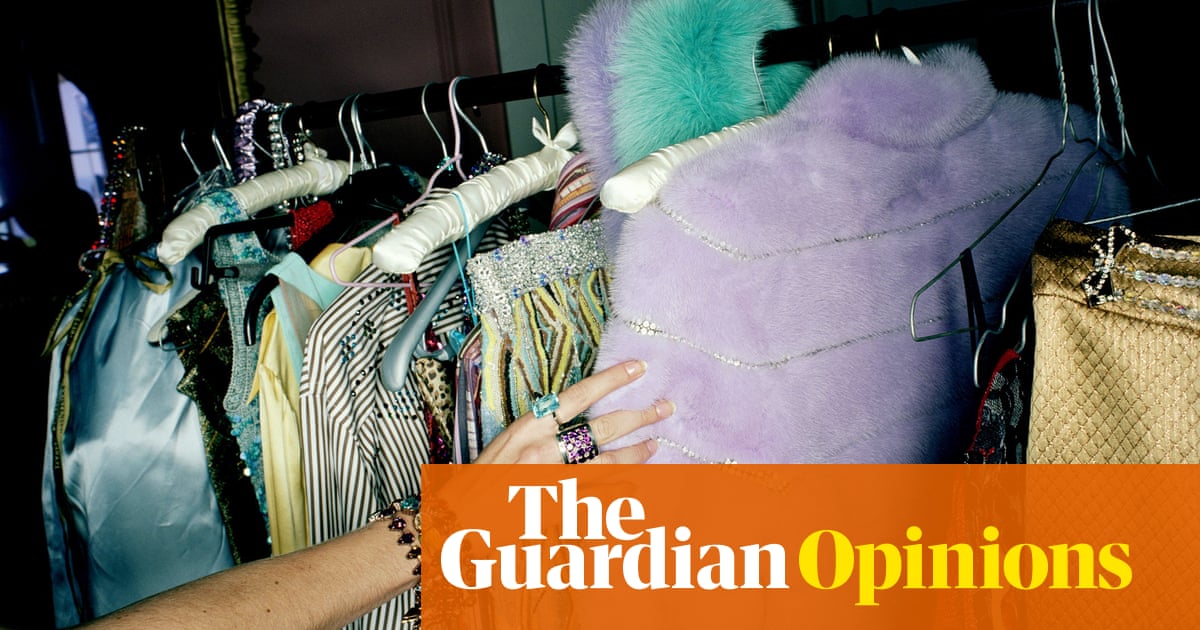I’ll admit it, Carrie Bradshaw in aviators and a fur coat, smoking and drinking beer while watching baseball, spoke to me. It was season two ofSex and the City, 1999. She was bruised from a recently ended relationship but on the brink of dating “the new Yankee” and I was a teenager, probably home from playing racketball and on the brink of Quorn sausages for dinner.
While it wasn’t the whole equation, the fur coat was certainly part of it. The way she could shrink into it and appear nonchalantly, breezily beautiful despite unwashed hair and an aching heart. I’m not proud, but I was young, and this to me then looked like something I wanted a piece of.
Cut to now and, several years of anti-fur campaigning later, you might have thought that the outlook would be different, that fur would be an archaism at best and an ethical abomination at worst; the embodiment of a bygone era when we were still using the planet and its creatures like they weren’t going anywhere.
There had been concrete progress: many of the big-name fashion houses over the years banned it. In 2019, Kim Kardashian announced that she had “remade” all ofher favourite fur coats in fake furand then Queen Elizabethrenounced furin “any new outfits”. On it went: in 2021, Kering, the luxury conglomerate that owns many luxury brands, banned the use of fur, as the British Fashion Council had earlier done at London fashion week.
The debate around fur was over and won, right? Wrong. At the recent Milan fashion week,fur was furring. Of course it was the main character at the Fendi centenary show – the brand started as a fur workshop in 1925. (In a full-circle moment, Sarah Jessica Parker was sitting on the front row.)
It was there, whether faux or otherwise, at other shows too, and other fashion weeks. At one of the buzziest shows of London, Simone Rocha, models including Alexa Chung walked in faux fur (yes, no animals have been killed, but the optics are the same). At sustainably minded brand Ganni, in Paris, the fur was recycled polyester. While in New York, fromthe catwalks to the streets, the city looked like the inside of a Narnian wardrobe. Real or not, seeing fur in the ether makes people more likely to want it, to wear it; it makes it aspirational but, more crucially, it normalises it. The ripple effect is real.
Perhaps more surprising than the fact that the fashion industry is still a sucker for fur, is that young people are newly embracing it. In London, New York and Berlin, people not old enough to watch SATC first time around are draping themselves in it. It seems to be limited to vintage. On TikTok, views of videos about vintage coats have increased by 243% over the past year. Google searches for “vintage fur coats” have reportedly gone up 688% since January 2023. The consensus seems to be that it isgen Z who are driving the trend.
Why this is happening has already been the subject of fascination and consternation. There’s a lot to unpack. At the time real fur was being banned en masse, faux fur was offered as an ethical alternative. People could have their cake and eat it. But now, many consumers – perhaps particularly younger ones – are educated enough to know that the fake stuff is, in the main, made from plastic. So vintage furs haveregained some of the moral high ground, somewhat dissipating the stigma.
Then of course there is the role of influence. A comprehensive catalogue of fur can be traced back to the Kardashian/Jenners, whose collective Instagram following outpaces that of most countries.Kendall Jenner, a 29-year-old model, has been wearing an embarrassment of vintage fur looks of late. This is the family that shifted the dial on what was considered the female body ideal of the first half of the 21st century. When they champion a certain hip to waist ratio, people hit the gymor doctor’s surgery. When they wear fur, people reach for the pelts.
Then there was last year’s“mob wife” aestheticthat saw young people vying to dress like Carmela Soprano in her stolen sable. Her more recent heir might be Ani in theOscar-winning film Anora, whosesable coatwas that rags-to-riches story’s glass slipper.
Add to that a lesser-known but equally furry aesthetic: boom boom. In December, trend forecaster Sean Monahan, the man responsible for the portmanteau “normcore”, announced the trend as a cultural expression of the new Trump era. It is over-the-top and unashamed about its own greed and lack of wokeness.
Some young people seem to feel about fur – judging by the kind of content several make about it on TikTok – the way I felt about seeing Carrie at the ballgame. There seems to be a thirst for a certain kind of swagger – whatever that means to you – that wearing a fur can give you; an impenetrability. On TikTok, creatorsmake videos of themselvesin fur coats backdropped by Future’s Low Life, a song about unapologetic hedonism. “How thrift furs got me feeling”, writes one user. People are commenting on theconfidence boost they feelwhen wearing fur.
But we can’t lay this all at the feet of gen Z. I have a hunch that many people never stopped liking the aesthetic of fur, and would still have worn it – even in the knowledge of the cruelty involved – had it not been for the shame factor. Forces have now converged to shake off that stigma. Trends cycle – and so, it seems, do our consciences.
Ellie Violet Bramley is the Guardian’s acting fashion and lifestyle editor
